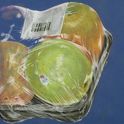What makes a cake suitable for a Bundt pan? I know there are specific recipes, but I'd like to understand why/when that pan is appropriate. How about bread?
9 Comments
betteireneJanuary 31, 2011
Baba au rhum, pound cakes, quick breads (banana, pumpkin, lemon-poppyseed, for example), Sally Lunn bread, brioche, garlic-parmesan pull-apart bread, angel food cake, bread pudding, kugel--you can bake almost anything in a Bundt pan. I think mine gets used most often as the skirt for Barbie's ball gown for birthday cakes.
susan G.January 30, 2011
Thank you all for the input. I have a new bundt pan to initiate, and wanted to know how far outside the box one can go.
Queen O.January 29, 2011
Only one thought to add to the great stuff above. It is usually a cake where you don't want a traditional buttercream or fluffy frosting. Seems mostly to be served plain, with a sprinkle of powdered sugar, a syrup or ganache.
VerdigrisJanuary 29, 2011
Here's what Wikipedia has to say about the history of the pan:
"It would appear that "bundt" is derived from the German Bundkuchen (in Southern Germany and Austria called Gugelhupf, in Switzerland Gugelhopf), a ring-shaped tea-time cake. The word bundt appears as early as 1901 in The Settlement Cookbook, written by Lizzie Kander of Milwaukee, Wisconsin. Bundt is used instead of bund in a recipe for "Bundt Kuchen."[1] The aluminum bundt pan is a variation of ceramic cake forms that were used in Germany, Austria, and Hungary to make the ring-shaped cakes and was trademarked in 1950 by H. David Dalquist, founder of Nordic Ware, based in St. Louis Park, Minnesota, who developed it at the request of members of the Hadassah Society's chapter in Minneapolis, Minnesota. [2] The old-world pans, with fluted and grooved sides, made of delicate ceramic or cast iron, were heavy and therefore difficult to use. He modified some existing Scandinavian pan designs and fashioned the pan out of aluminium.
"The pan sold somewhat slowly until a Pillsbury-sponsored baking contest in 1966 saw a bundt cake win second place. This prompted a scramble for the pans, causing them to surpass the tin Jell-O mold to become the most-sold pan in the United States. Since introduction, more than 50 million bundt pans have been sold by the Nordic Ware company.
"The women of the Hadassah Society called them "bund pans". The German word bund in bundkuchen originated either from bundling or wrapping the cake's dough around the pan's centre hole[3] or because a bund is a gathering of people.[2] (In both German words, the final d is pronounced like a t.) Dalquist trademarked the word bundt, and Pillsbury licensed the name in 1970 for a line of cake mixes."
I have found that most any Pound Cake recipe works will in these pans.
As for bread, I am now inspired by you all to try a brioche dough in mine. Would make a large loaf, but that just means more yummy toast for me!
"It would appear that "bundt" is derived from the German Bundkuchen (in Southern Germany and Austria called Gugelhupf, in Switzerland Gugelhopf), a ring-shaped tea-time cake. The word bundt appears as early as 1901 in The Settlement Cookbook, written by Lizzie Kander of Milwaukee, Wisconsin. Bundt is used instead of bund in a recipe for "Bundt Kuchen."[1] The aluminum bundt pan is a variation of ceramic cake forms that were used in Germany, Austria, and Hungary to make the ring-shaped cakes and was trademarked in 1950 by H. David Dalquist, founder of Nordic Ware, based in St. Louis Park, Minnesota, who developed it at the request of members of the Hadassah Society's chapter in Minneapolis, Minnesota. [2] The old-world pans, with fluted and grooved sides, made of delicate ceramic or cast iron, were heavy and therefore difficult to use. He modified some existing Scandinavian pan designs and fashioned the pan out of aluminium.
"The pan sold somewhat slowly until a Pillsbury-sponsored baking contest in 1966 saw a bundt cake win second place. This prompted a scramble for the pans, causing them to surpass the tin Jell-O mold to become the most-sold pan in the United States. Since introduction, more than 50 million bundt pans have been sold by the Nordic Ware company.
"The women of the Hadassah Society called them "bund pans". The German word bund in bundkuchen originated either from bundling or wrapping the cake's dough around the pan's centre hole[3] or because a bund is a gathering of people.[2] (In both German words, the final d is pronounced like a t.) Dalquist trademarked the word bundt, and Pillsbury licensed the name in 1970 for a line of cake mixes."
I have found that most any Pound Cake recipe works will in these pans.
As for bread, I am now inspired by you all to try a brioche dough in mine. Would make a large loaf, but that just means more yummy toast for me!
amysarahJanuary 29, 2011
The only 'bread' I've made in a bundt pan (a simple, not too ornamental one) is Monkey Bread, when my children were little. The tunnel in the pan's center creates more surface for the nuggets of dough - rolled in butter/cinnamon/brown sugar - to caramelize. Unmolded it does sit a bit wobbly, but that's fine - it's just a casual, fun kind of thing anyway.
Otherwise I tend to think of bundt cakes as dense, moist, cakes - a favorite is a sour cream coffee cake with a layer of crunchy sugar/walnut steusel swirled through it. All the snow on the ground is making me crave one right now!
Otherwise I tend to think of bundt cakes as dense, moist, cakes - a favorite is a sour cream coffee cake with a layer of crunchy sugar/walnut steusel swirled through it. All the snow on the ground is making me crave one right now!
SoozllJanuary 29, 2011
I don't see why bread wouldn't actually work in a bundt pan, except that the bottom of the pan is the design that is supposed to be the top of the end product. Since bread rises, it would be pretty wobbly and you could never have a shiney crust on the designated top.
I agree with everyone else, tight crumbed cakes will work best in a bundt pan rather than sponge or light open crumb type cakes. If the cake domes, you can cut it off to flatten the bottom without affecting it as much as it would bread. .
I agree with everyone else, tight crumbed cakes will work best in a bundt pan rather than sponge or light open crumb type cakes. If the cake domes, you can cut it off to flatten the bottom without affecting it as much as it would bread. .
RobertaJJanuary 29, 2011
Yeah, I think one of the defining features of a "Bundt" pan is the fluting, or some sort of decorative exterior (I've recently seen castles, flowers, shells, and so on....), so I'm not sure bread is a great idea.
I agree with Melusine, that the density in a Bundt cake is key. Most of the ones I've had/made have been almost like a pound cake in texture, not very fluffy or airy like a layer cake. They often have some mix-ins like chocolate chips, nuts or dried fruit. Or they can have 2 types of batters swirled together. Or a streusl layer, I think I've made coffee-type cakes with an internal streusal layer in my Bundt pan.
With bread, or a light cake batter, I'd worry it would sink after you unmolded it, *if* it would even unmold.
I agree with Melusine, that the density in a Bundt cake is key. Most of the ones I've had/made have been almost like a pound cake in texture, not very fluffy or airy like a layer cake. They often have some mix-ins like chocolate chips, nuts or dried fruit. Or they can have 2 types of batters swirled together. Or a streusl layer, I think I've made coffee-type cakes with an internal streusal layer in my Bundt pan.
With bread, or a light cake batter, I'd worry it would sink after you unmolded it, *if* it would even unmold.
MelusineJanuary 29, 2011
It's also for dense and/or really moist cakes that need the extra boost of heat from the center 'tower' to cook evenly. Two loaf pans often work as a sub for a bundt pan. Bread? My bundt pan is fluted, so I haven't tried.
drbabsJanuary 29, 2011
I think of a Bundt cake as a simple, homey cake. You bake it all in one pan, it looks pretty, and maybe you glaze or ice it, but it's not complicated. Layer cakes have filling and icing and decorations--less simple and homey. I've never made bread in a Bundt pan.
Showing 9 out of 9 Comments
Recommended by Food52
Popular on Food52
Continue After Advertisement




